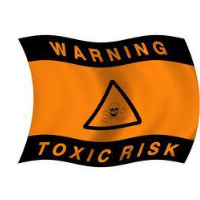NASA Finally Agrees to Clean Up Santa Susana Lab, and Watchdog Says It’s Doing Too Much

When you are cleaning up a site contaminated with nuclear and chemical waste, how clean is too clean?
The 2,850 acres surrounding the Santa Susana Field Laboratory in Ventura County, north of Los Angeles, have been dangerously contaminated for more than 50 years. The one-time rocket test facility, also known as Rocketdyne, suffered a partial nuclear meltdown in 1959 and the site’s former tenants have contributed to major contamination in the area that has been identifiable since at least 1989.
After years of denial, finger-pointing and delay, the National Aeronautics and Space Administration (NASA) and California inked a deal in 2010 to finally clean up the agency’s 451.2-acre portion of the mess. But a report by NASA’s inspector general threatens to derail the agreement.
“NASA has agreed to clean its portion of the Santa Susana site to a level that exceeds the generally accepted standard necessary to protect human health in light of the expected future use of the site,” the report concluded.
Not only would the site be too clean, the cleanup would cost too much. “The cleanup is likely to cost the taxpayers significantly more than the cleanup effort NASA agreed to.” The NASA section would be used as open space once it’s decontaminated.
In 2007, NASA, former site user Boeing and the U.S. Department of Energy signed off on a cleanup consent decree with the California Department of Toxic Substances Control. A state law passed later that year set even higher cleanup standards and Boeing sued to overturn it. Boeing won in the early rounds when a U.S. District Court judge declared the law unconstitutional, and the case is expected to be heard by the U.S. Court of Appeals for the Ninth Circuit this year.
Meanwhile, NASA entered into another agreement in 2010 with the state to begin the cleanup based on the 2007 agreement and pledged to finish its work by 2017. NASA estimates the cost at $200 million, but the inspector general said the property could be suitably cleansed for residential and recreational use for half as much.
The inspector general recommended the parties go back to the negotiating table.
Thirty years after the 1959 nuclear incident released gases with 459 times more radiation than emissions at Three Mile Island, a routine survey by the Department of Energy found radioactive and chemical pollution. In 1999, Boeing was ordered to remove soils contaminated with dioxin, PCBs, solvents and other waste at a spot onsite called the Sodium Burn Pit.
In 2002, the toxic chemical perchlorate was identified in local groundwater linked to Santa Susana. An estimated 800,000 gallons of the known-carcinogen Trichloroethylene (TCE) were used to clean engine parts there before and after the firing of 30,000 rocket engines.
Community activists have battled with state and federal government officials over identifying the contamination and coming up with a solution. When Norm Riley, the Department of Toxic Substances Control official in charge of the Santa Susana project, resigned in 2009, he characterized his role as “a subordinate who serves at the pleasure of appointing powers in an organization where obfuscation, abdication of authority, collusion, and other contemptible behaviors currently trump honesty and integrity which the public rightly expects and deserves.”
–Ken Broder
To Learn More:
Audit Questions NASA's Plan for Former Rocket Site (Associated Press)
NASA's Environmental Remediation Efforts at the Santa Susana Field Laboratory (Office of Inspector General) (pdf)
Rocketdyne and the L.A. River (Aerospace Cancer Museum of Education) (pdf)
Historical Documents (Rocketdyne Cleanup Coalition)
Santa Susana Overview (DTSC official website)
Santa Susana Fact Sheet (DTSC official website)
Contamination Overview (Fact-Archive)
50 Years After America’s Worst Nuclear Meltdown (Investor Village)
A Timeline (H2Oh No!!!)
Meltdowns and Horrible Accidents (An interview with Daniel O. Hirsh)
- Top Stories
- Controversies
- Where is the Money Going?
- California and the Nation
- Appointments and Resignations
- Unusual News
- Latest News
- California Forbids U.S. Immigration Agents from Pretending to be Police
- California Lawmakers Urged to Strip “Self-Dealing” Tax Board of Its Duties
- Big Oil’s Grip on California
- Santa Cruz Police See Homeland Security Betrayal in Use of Gang Roundup as Cover for Immigration Raid
- Oil Companies Face Deadline to Stop Polluting California Groundwater





